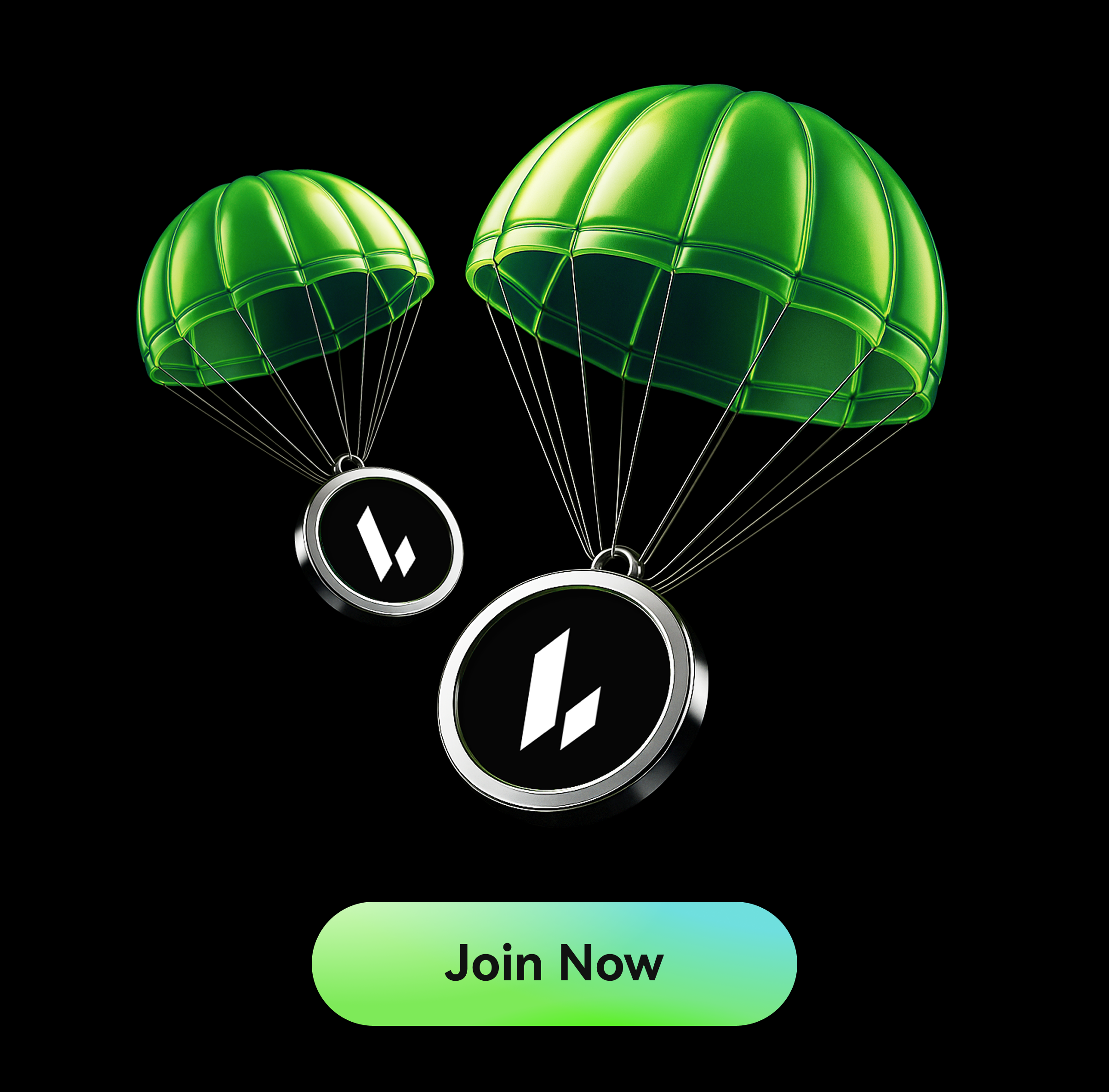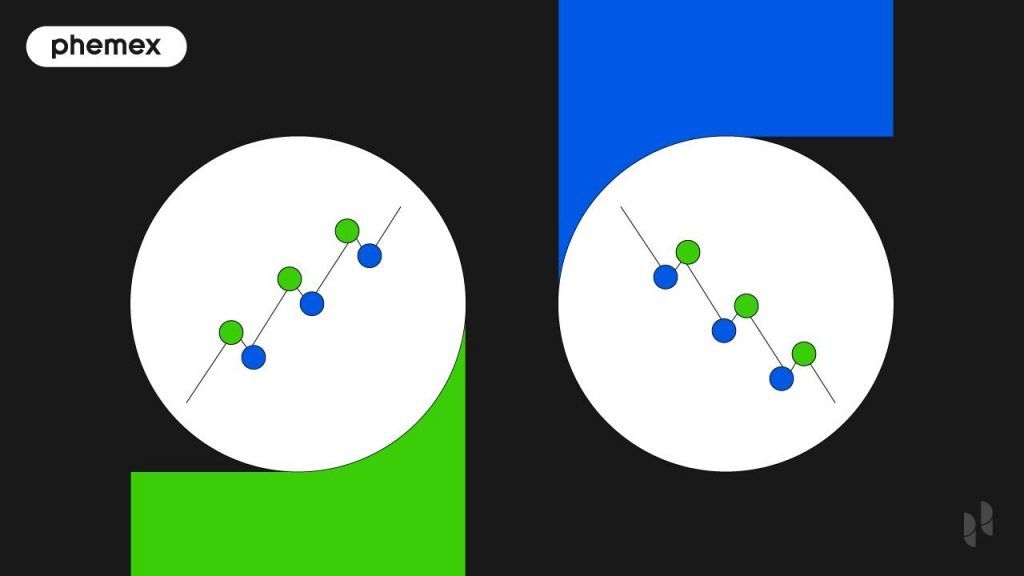When looking to make the right trading decision, a certain amount of technical analysis is required. Although there are many tools that can be used to help this process, all good traders will look for patterns in the price charts. The patterns found in these charts can indicate whether an asset will turn bearish or bullish and to what extent, thereby helping a trader decide what action to take. One group of patterns that is used time and time again for both traditional securities trading and crypto trading are continuation chart patterns. By learning these patterns, you can enter trades with the trend at opportune moments, and set logical price targets and stop-loss levels. The crypto market, known for its volatility, actually produces textbook continuation patterns quite frequently. In this article, we’ll explore what continuation patterns are, the psychology behind them, how to identify the main types on your charts, ways to trade them effectively, and when to be cautious.

What Is a Continuation Pattern?
Continuation patterns in technical analysis are, as the name suggests, chart patterns that show that an asset’s price trend will continue once the pattern has finished. Thus, continuation patterns are understood as a pause in an asset’s trend; a period of consolidation, or price acceptance, before the trend continues its journey. They can be both bearish and bullish, with the former showing a continuation of a downtrend and the latter showing a continuation of an uptrend. In addition, some continuation patterns, such as wedges, can show reversals of a trend, while others, such as triangles, are bilateral chart patterns that show that an asset’s price can break out in either direction.
Continuation patterns can be used over different time periods too and are therefore helpful for day traders or long-term traders, which are more common in the crypto space. However, continuation patterns are not fool proof, and should therefore be used in conjunction with other indicators. Continuation patterns are a great indicator to help a trader make their trading decision, but they should not be used alone. Traders will back up their findings with other trading tools and indicators, sometimes even waiting for the breakout to happen to first confirm the breakout direction before entering a trade.
How to Use Continuation Patterns
Continuation candlestick patterns, being that they are usually spotted during technical analysis on an asset’s candlestick pattern, can indicate stronger or weaker price breakouts, as well as being signs of increased volatility. The different intensity of these trends can usually be noted in the following ways:
- Strong trend followed by small continuation pattern: When the waves on the chart show a strong trend and the following waves of the continuation pattern are smaller, this is indicative of a reliable continuation of the trend.
- Similar sized trending pattern and trend waves: When both the preceding trend’s waves and the waves constituting the continuation pattern are of a similar size, this is indicative of possible volatility. The fact that one is not bigger than the other is telling of a lack of conviction from traders in either direction.
- Repetitive cycle of small trend waves followed by a continuation pattern: When the trend shows a small increase in cost followed by a continuation pattern, another small increase in cost followed by a continuation pattern, and so on, this is indicative of hesitancy in the market. This means that it may not be the best investment opportunity, either because of risk or simply that it will be slow and offer low returns.

Psychology of Continuation Patterns
Understanding the psychology behind continuation patterns can boost your confidence in trading. During a strong trend, like Bitcoin rising from $20k to $30k, early buyers may take profits, slowing the advance, while latecomers hesitate to buy, fearing a pullback. This balance creates a consolidation phase, often leading to patterns like flags or triangles.
During this time, volatility contracts as traders stay on the sidelines, waiting for signals. Bulls look for confirmation of continuation, while bears look for signs of weakness. Continuation patterns can mislead bears, as the price may break out in favor of the trend, forcing bears to exit their positions.
Trader self-fulfillment plays a role too: many traders recognize patterns like bull flags, setting buy orders above key levels, contributing to breakouts. However, false breakouts can occur, shaking out eager traders.
Continuation patterns reflect market rhythm, moving in waves of push and pause. A tight, orderly pattern indicates bullish control, while a messy one suggests uncertainty. In strong trends, slight counter-trend movements indicate mild profit-taking rather than panic, showing a prevailing bullish or bearish sentiment.
Bullish and Bearish Continuation Patterns
Continuation patterns are quite easy to spot, but they do exist in many different forms, with different responses required for each one. Some of the major ones to look out for are the following:
Flag Continuation Pattern
These continuation patterns are known as flags because of their appearance, where the trend is the flagpole, and the ensuing consolidation period is shown by a continuation pattern going against the previous trend in a rectangular shape. They are often found in strong uptrends and downtrends and can be either bullish or bearish. They are most indicative of a strong breakout when their waves (in the rectangle area) are tight and bounce up and down at equal heights, bouncing up to the height where the initial trend finished.
- Point of entry: To determine the point of entry into a trade, a trader will look for the point when the value begins to break out from continuation pattern’s trendlines.
- Target profit point: To locate the target profit area, a trader will measure the flagpole of the pattern and project it onto the breakout point. This will show them where to make their profit, as the trends are usually about the same length.
Rectangle continuation pattern
As the name suggests, the continuation pattern for a rectangle continuation pattern will follow a rectangular shape, with the value bouncing between two parallel trendlines. As they follow an uptrend or downtrend, these continuation patterns do look very similar to flags, but they differ in the size, or broadness, of their pattern. Rectangle continuation patterns usually range over a much longer period than a flag pattern. For example, one upward line can be over a period of multiple days. This makes them particularly good for long-term traders, such as crypto traders.
- Point of entry and target profit point: As stands to reason, since they are the same shape, both the point of entry and target profit point of a rectangle continuation pattern follow the same rules as in a flag pattern.
Pennant Continuation Pattern
Pennants are very similar in appearance to flag patterns, as pennants are also formed of a flagpole and appear during strong trends. A pennant pattern’s flag, however, finishes in a triangular shape as opposed to a rectangular shape. These can be bearish or bullish.
- Point of entry: To take advantage of the momentum, traders will wait for the asset’s value to break out from the triangle shape’s trendlines before entering a trade — above the resistance line for bullish patterns and below the support line for bearish patterns. Traders will often place a stop loss order on the other side of the pattern to mitigate potential heavy losses, though this should be done with any pattern.
- Target profit point: As with the flag pattern, a trader will measure the flagpole and project it onto the end of the pennant pattern. The trend may continue past the flagpole or not reach the end, but it is a good indicator of how long the trend will continue and where a trader can expect to exit the trade.
Rising and Falling Wedge Continuation Patterns
Wedge patterns are slightly more complex than other continuation patterns as they can signal a continuation or reversal of a trend, depending on what type they are and in what trend they are found.

They come in two types and are particularly useful for shorter trades, such as daily or 4-hour trends:
Rising wedge
These patterns appear as a flagpole (the trend), followed by the continuation pattern, which is represented by two converging trendlines (shaped like a triangle) that are upward sloping. When a rising wedge is seen in an uptrend, then it is indicative of a reversal pattern in the asset’s value. When a rising wedge is found in a downtrend, meanwhile, it is indicative of a continuation of the trend. This pattern is considered a bearish pattern.
Falling wedge
Again, this appears as a flagpole followed by two converging trendlines (the continuation pattern). However, a falling wedge differs from a rising wedge in that the converging trendlines are downward sloping. When a falling wedge is seen in a downtrend, then it is indicative of a reversal pattern in the asset’s value. When a falling wedge is found in an uptrend, meanwhile, it is indicative of a continuation of the trend. This pattern is considered a bullish pattern.
Triangle Continuation Pattern
As the name suggests, the continuation pattern for a triangle continuation pattern will follow a triangular shape. The asset’s value on the graph will bounce between two converging trendlines, where the volatility is slowly dying off. Triangle continuation patterns look very similar to wedges, but like rectangles and flags, they differ in the size, or broadness, of their pattern.

Triangle continuation patterns usually range over a much longer period than a wedge pattern. For example, one upward line can be over a period of multiple days. This makes them particularly good for long-term traders, such as crypto traders. Additionally, triangle patterns can be found as ascending, descending, or symmetrical styles.
- Point of entry and target profit point: Triangle patterns are what are known as bilateral chart patterns. This means that the breakout can go either way. To maximize profit, a trader will place orders on both sides of the triangle: one for a bullish trend and another for a bearish one. This may seem risky but remember that there are tools in place to trigger an order or sell based on if an asset hits a certain value. These are called market, limit, and stop orders and are a great way to avoid heavy losses and maximize returns. It should be noted, however, that if placed too close to the continuation pattern, a false start could trigger an order in the reverse direction. To avoid this, place stop orders within a safe distance but not too far as to avoid big losses should the trend turn.
How to Trade Continuation Patterns
Trading continuation patterns involves entering the market in the direction of the original trend after a pattern confirms, while managing risk. Here’s a concise guide:
-
Wait for Breakout Confirmation: Enter the trade only after the price breaks out of the pattern in the trend's direction. For a bullish continuation, look for a break above resistance; for bearish, below support. For example, if Ethereum has surged to $2,000 and forms a pennant at $1,950, a trader might place a buy order at $1,980.
-
Position Sizing and Entry: Ideally, breakout volume should spike. Enter long or short as appropriate, being cautious of slippage. Limit orders can help secure better fills during fast breakouts.
-
Set a Stop-Loss: Use the pattern's structure to set a logical stop-loss. For instance, with Ethereum long at $1,980, place a stop below the pennant support around $1,900, perhaps at $1,880.
-
Target Setting: Use measured move techniques to set profit targets based on the initial move's height. In the ETH example, with a $500 prior move, a breakout at $1,980 may target $2,480. Consider setting conservative targets and taking partial profits.
-
Managing the Trade: As the trade moves in your favor, adjust stops (e.g., to breakeven) to secure profits. Trail stops below new swing lows to lock in gains.
-
Watch for False Breakouts: Not every breakout is reliable. If a breakout occurs on low volume, it may reverse quickly. Keep tight stops to minimize losses, as fake-outs can sometimes lead to genuine moves in the opposite direction.
By following this structured approach, traders can better navigate continuation patterns and enhance their potential for profit.

Limitations of Using Continuation Patterns to Trade
Continuation patterns are useful but not foolproof and should be approached with caution. Here are some key limitations to consider:
-
Late-Stage Trends: Patterns seen at the end of a long trend (e.g., a 500% increase) may mislead. Trends eventually end, so be wary of overbought/oversold conditions or major resistance levels.
-
Weak Momentum / Low Volume Breakouts: A breakout lacking volume or momentum is often unreliable. Healthy breakouts should show strong movement; if they don't, wait for more confirmation.
-
Choppy, Non-Trending Markets: Continuation patterns thrive in trending environments. In sideways or volatile markets, false breakouts are common, so ensure a clear trend is present.
-
Ignoring Other Market Factors: Major news can disrupt patterns, causing unexpected reversals. Be aware of upcoming events that might impact market sentiment.
-
Complex or Ambiguous Patterns: If a pattern is unclear or mixed, it’s better to wait for confirmation. Jumping into a messy setup can lead to losses.
-
Wedges and Bilateral Patterns: These can indicate reversals, so avoid overconfidence in patterns. Use appropriate position sizing to manage risk.
-
False Continuation vs. Reversal: Assess pullback depth and consolidation character. Deeper pullbacks or volatile shifts may signal a reversal rather than a continuation.
In summary, always be cautious with continuation patterns, as their limitations can lead to misleading signals.
Conclusion
Continuation patterns are a great way for traders to locate powerful breakout trends before they happen, thereby maximising their chances of making large returns and minimising risk. As with any technical analysis pattern, tool, or indicator, however, these patterns should not be employed alone, instead being paired with multiple others to verify predictions. Continuation patterns are some of the easiest to spot, with flag patterns in particular being good for beginner traders. Once a trader has familiarised themselves with these useful technical analysis patterns, the last remaining thing to do is to learn how to protect oneself in case of false breakouts — as after all, no prediction can be fool proof. To help with this, a trader can use market, limit, and stop orders.
To effectively trade continuation patterns (or any strategy), it’s essential to use a reliable and feature-rich trading platform. Phemex is an ideal exchange for this purpose, whether you’re trading major cryptocurrencies like Bitcoin and Ethereum or exploring altcoins. On Phemex, you get advanced charting tools (with TradingView integration) that allow you to draw trendlines and spot patterns easily. The platform’s speed and liquidity ensure you can execute your breakout entries and exits swiftly, which is crucial when a pattern completes and the market moves quickly. Phemex also offers trading bots that could be programmed to detect certain patterns or to trail your stop behind a running trend, automating part of your strategy. Meanwhile, while you wait for the next perfect setup, you can put idle funds to work with Phemex Earn, generating passive yield.
Read More
- The Diamond Pattern: What Is It and How To Use It?
- The 3 Most Important Triangle Patterns in Crypto Explained
- The 8 Most Important Crypto Candlestick Patterns
- What are Harmonic Patterns: Predicting Future Price Actions
- All About Reversal Candles: How to Read and Trade
- How to Read Crypto Charts: Learn Trading Chart Patterns
- What Is Trend Trading: Following the Market When It Pays
- How To Identify and Trade Pennant Patterns?











